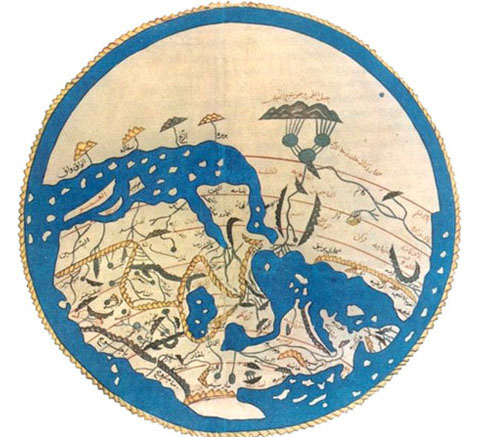Article of the Month - May 2023
“Between LamentingVicissitudes of Life and Celebrating Ottoman Authority in the Sixteenth Century: Māmayya al-Rūmī’s (d. 985/1557-9) Times and Poetry”
(Haci Osman Gündüz:
Near Eastern Languages and Civilizations, Harvard University)
Haci Osman Gündüz, “Between LamentingVicissitudes of Life and Celebrating Ottoman Authority in the Sixteenth Century: Māmayya al-Rūmī’s (d. 985/1557-9) Times and Poetry,” Philological Encounters 7 (2022) 299-333.
Read the article here.
Keywords: Māmayya al-Rūmī • Rūmīs • sixteenth-century Damascus • Ottoman-era Arabic literature • role of poetry • panegyrics • political legitimacy
Abstract:
This study investigates the status of poets and poetry in sixteenth-century Ottoman Damascus by focusing on soldier-turned-poet Māmayya al-Rūmī (d. 985-7/1577-9). As a poet he received patronage from local centers of prestige; however, such support seems to have been at best sporadic. While his dīwān (collection of poetry) is replete with poems celebrating his poetic ingenuity—notwithstanding the fact that he was not a native Arab, it is also a testimony to his frustrations with lack of financial security and his diminishing social status. In addition to gloomy poetry, he also composed a great number of panegyrics in honor of Ottoman sultans, scholars, and administrators. What was Māmayya’s position in the literary culture of sixteenth-century Damascus as a Rūmī? What was the role of panegyric poetry in this period? Did poets voice their concerns about lack of appreciation? This study explores these questions by focusing on a selection of poems by Māmayya al-Rūmī with references to his contemporary, and later poets.
Nomination Statement:
The article brings to light an obscure [‘ajami] figure in Arabic literary history who emerges in Damascus, a Mediterranean crossroads transitioning from the Mamluk to the Ottoman era. As a former janissary turn poet, Mamayya al-Rumi, played a significant role in the cultural dynamics of the sixteenth century that contributed to blurring the dividing lines among Arabic, Turkish, and Persian literary traditions and bringing poetry more prominently onto wider socio-political terrain. The article also addresses the old familiar narrative of decline (inhitat) in Arabic letters caused by the onslaught of the Ottoman Empire. The author provides the reader by way of skillful translations with a strong feel for the richness and importance of poetry in a highly fluid multi- ethnic and multilingual world. The value of this article rests on the fact that the author has worked closely with both obscure manuscripts and printed primary sources to carve out new space for western Mediterranean literary history in the late medieval/early eras.
Authors’ Comment:
Literary historians have shown limited interest in Ottoman-era Arabic literature (1516-1800). This lack of attention can be attributed to the prevailing belief that the literary, intellectual, and cultural realms experienced a period of ‘decadence’ or ‘decline’ (inḥiṭāṭ) following the Mongol invasion in 1258, persisting until the ‘renaissance’ (nahḍa) of Arabic letters in the nineteenth century. However, recent scholarship has challenged this perception of decline and has paved the way for fresh avenues of exploration into the intellectual and cultural landscape of that period. While the prominent critics of the decline narrative have primarily focused on Mamluk-era Arabic poetry, there has been a growing interest in the Ottoman-era as well. With this impetus in mind, this article explores the life and poetry of Māmayya al-Rūmī, a poet born in Istanbul, who, as a janissary, settled in Damascus at an early age and became a literary sensation in the city during its transition from Mamluk to Ottoman rule. Damascus attracted people from various corners of the Ottoman Mediterranean basin and beyond, and many settled in the city, making it more cosmopolitan. The article delves into Māmayya al-Rūmī’s life as a non-Arab poet composing Arabic poetry in various genres and his struggles to find financial security and social status. It discusses his panegyric poetry dedicated to Ottoman sultans, scholars, and administrators, elucidating the appreciation and reception of Arabic poetry by Ottoman officials. Additionally, translations and interpretations of selected poems from the poet’s dīwān (collection of poetry) are provided, highlighting his position in the literary tapestry of sixteenth-century Damascus.
Would you like to discuss this article?
Start a thread on the Mediterranean Seminar list-server
See the other Articles of the Month here.
